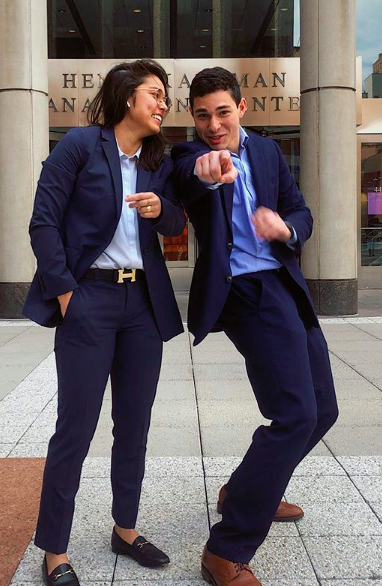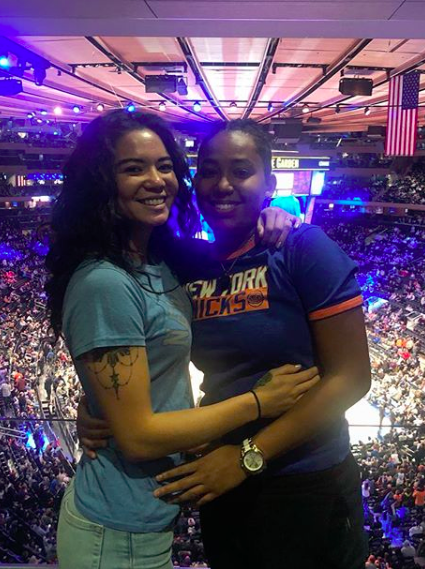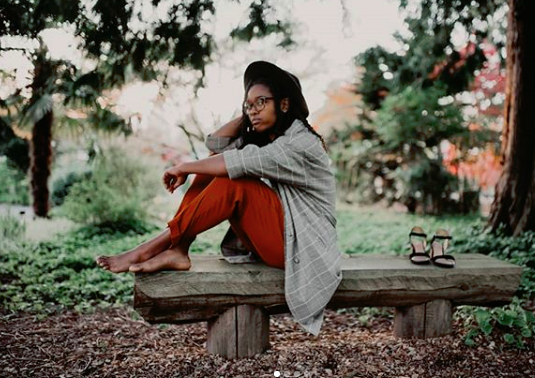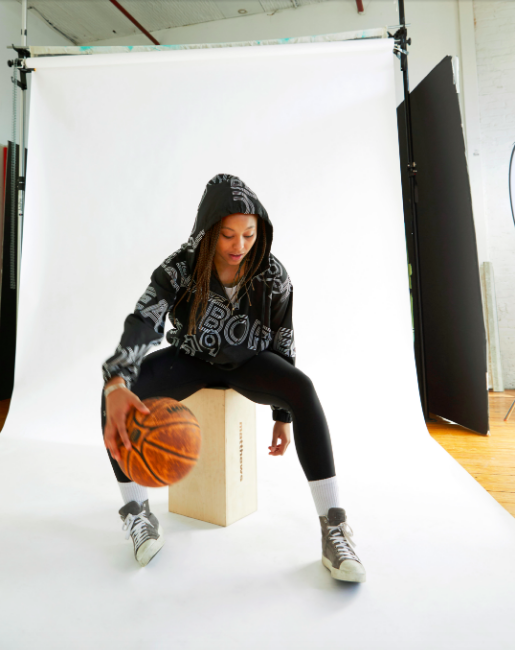Welcome to our special section, Thrive on Campus, devoted to covering the urgent issue of mental health among college and university students from all angles. If you are a college student, we invite you to apply to be an Editor-at-Large, or to simply contribute (please tag your pieces ThriveOnCampus). We welcome faculty, clinicians, and graduates to contribute as well. Read more here.
“Excuse me, Sir”
When I was 6,
I always liked to sit in a chair with my legs sprawled, facing backwards.
Miss Linden would tell me to
Sit like a lady
And,
Act like a girl
Baggy pants
Oversized sweater
Ah what a shame, I walk like my brother.
Medium-pitch voice
Shoulder-length hair
Ah too bad, I’m an indefinite nail biter.
“Aggressive movements”
Hunched shoulders
Ah unfortunately, I look more like a fighter.
Sit like a lady
And,
Act like a girl
I began to miss
the common catcalls
the “applause” of their *woot*-*woot* whistle
my favorite sundress and romper
I turned to face the person who called me the latter
They tend to rush to apologize
They “fix it” by changing their greeting pattern
“Um, I mean ma’am”
Laughing, I say, “Oh, it doesn’t matter.”
Crying, I say, “Damn, I couldn’t be sadder.”
Screaming, I say, “Wow, I wish I looked “better.”
“Better” to those who institutionalized those lies
“Better” to those who stigmatized my insides
“Better” to those who criticized my thighs
“Better” than what Miss Linden believed I could sit like
“Better” than what Miss Linden thought I could act like
Smiling, I say,”Excuse me… Ah, I’m the only one who gets to choose what I look like.”
“Do you like men?”, my Lyft driver asked me, interrupting my headphone daze while driving me home last Saturday night. I laughed, as I typically do when people ask me this. I wondered do all people think this about a girl wearing a crop top and pants? I replied with an eye roll, “Sometimes, why?” He said, “Oh well, I didn’t want to offend you and assume that you like girls, but I also had a feeling that you liked girls. Not because you dress like a dude or anything, but I don’t know…” I laughed again.
Laughing is my defense mechanism. It fills the silence. It’s a symbol for joy. And, it’s a simple reaction that brings comfort to all who are involved in the interaction — comfort that is important.
Recently, I decided to interview 10 cis women in their early 20s who identify as queer. I asked each person if they feel an obligation to dress more “feminine” or “masculine” in order to fulfill societal standards of masculinity or femininity, despite being queer. Their answers spanned a wide range, as you might expect from a group of 10 women who each have their own standards of looking and behaving as a queer person. It was fascinating to listen to each woman reflect about how they decide to compose their gender identity in dialogue with the idea that “I am no longer going to look or dress in a way that is considered ‘girly’ or ‘normal.'”
Don’t dress to impress
Do you ever wonder if the Tuesday morning outfit you feel most proud in only follows your feelings of satisfaction because this time, you finally look more like a “girl”? It’s an odd feeling. To question the part of yourself that has always followed you. Even in grade school, your kindergarten teacher with the floral patterned dress would have the girls and the boys stand from shortest to tallest on opposite sides of the room. They were them and you were you.
I was raised to think that looking, behaving and acting more “feminine” in a heteronormative context was what made one person more beautiful than the next. This is why, when I experienced the first time a stranger called me “Sir,” it felt as though the person I already had trouble looking at in the mirror had instantly disappeared. It was a terrifying feeling. To feel as if the feminine facade I had worked so hard to display was carelessly taken by the use of a word as my choice to wear a loose sweatshirt with baggy pants ruined the entire outcome of my day. Why?
“My mom posted a photo of me on social media and referred to me as her “handsome son.” It was probably a way for her to rationalize my sexual orientation at the time. I am called “Sir” about one or two times a week. When it happens in person, my instinct is to shy away, or in some cases I find myself trying to lower my voice to sound like a man, so I wouldn’t make the person feel awkward or bad about a mistake that they made. I still dress the way I want regardless of the potential commentary or confusion from the people around me. However, feeling more comfortable with the clothes I wear doesn’t mean I always feel comfortable within society.”

“When women wear dresses and heels, I wear a button down, suit and flats. I feel comfortable in a suit and flats, but sometimes I feel like the straight white males are confused with why I’m trying to be perceived as more “powerful.” I wear a suit because I am comfortable in them and it helps me perform my best mentally.”

“When I’m in a homosexual relationship, I actually feel a pressure to be more ‘girly’ or choose the skirt over the pants. I’m not sure if it comes from a need of wanting to be attractive to the girls I’m with, or if it’s because I want my homosexual relationship to feel like it more easily fits into a heterosexual context of what a relationship is. The question arises if whether what I want from myself is truly internal or informed by these outward forces.”

“Normal” is Overrated
I oftentimes feel as though I don’t quite belong anywhere. On most days before I leave my apartment, I double check the mirror to see if my hair looks long enough, if my clothes squeeze me tight enough, if my shoes look “girly” enough. Will the common stranger on the subway cart identify me as female? I am a queer black cis woman who is incredibly proud to label herself as such. However, I have a bad habit of linking my gender to the clothes that I wear. This tendency goes beyond the common misconception that blue collars are for boys and pink dresses are for girls.
“I used to feel more inclined to be feminine when I was going to straight bars than I would’ve when I would go to a lesbian bar. As I grew more comfortable with myself and stopped trying to fit any stereotypes or attempt ‘normality’ I started to care less about how I was perceived. That translated into me dressing for myself and not others.”

“The thought of having to put on a skirt for field hockey or a dress for a bat mitzvah made my skin crawl and my heart race. From ages 2 to 12 I shopped exclusively in the boy’s section. I had no understanding that I was queer in any way, but masculine clothing felt so right on my body. Sometimes I feel that dressing masculine puts a sign on my forehead that reads “I AM GAY,” so I choose to blend in and not have my sexuality on display at a work event or family Christmas dinner, and I wear a dress instead of a suit.“

You are enough
Comfort and Confidence. This is what these 10 women consistently hope for as we continue to dress while gay. It is evident that this sample of people seem to recognize their own self awareness in relation to the clothes that they wear and, they have managed to find a common ground of security within their own skin. However, in regards to the world around them, it seems to be a bit more difficult to find beneficial ways in which each individual would like to properly fit into our heteronormative culture as a queer person.
In terms of the contextual space in which these women act in, one could argue that that is the greatest challenge when dressing while gay. Whether it’s at the office, a summer internship interview, your extended family’s Christmas gathering, or a cocktail event that calls for the infamous “formal attire.” There is an incessant concern when attempting to dress in a way that brings the stranger beside you as well as a dearly beloved a sense of clarity in relation to the gender you identify as and the sexuality you have found relief in expressing.
“I always feel the pressure because I’m a woman — not because I’m queer. I notice in the workplace how people treat me differently when I dress more feminine and have makeup on verses when I’m wearing more gender neutral clothes. People are often surprised when I would say ‘my girlfriend…’ and I think it has to do with the way I dress. I don’t intend to change that because I love my clothes and I like my style. But I do look like I could have my arm hooked around some guy’s instead of standing next to another girl, also in wedges and a sundress. I kind of like that it throws people off because I like to keep people on their toes.”
—Anonymous
“I was raised to think ‘feminine’ meant beautiful. We always had to wear dresses at Christmas or on Easter or New Year’s. I just felt mad ugly because I felt like I was failing at being feminine and didn’t even think dressing more masculine was an option? When I do dress ‘queer’ I sometimes feel less beautiful which kind of sucks. But also at this point I’m really comfortable with my fluidity and that’s helped me experiment more with my fashion and makeup.”

“I always dressed how I wanted to dress. I only wear what makes me feel comfortable and the most authentic self I can be. People have so many views as to what a ‘lesbian’ should look like. But to me I always just want to be my 100 percent authentic self and I want whoever I end up with to understand that and know that person.”

Stop asking me to identify
This may seem obvious as we attempt to debunk what “dressing while gay” truly looks and feels like from the perspective of a few. Nevertheless, I have found that in spaces where there is a clear power dynamic is when we may feel most compelled to change our dress wear.
In order to unpack theses hierarchical systems that often work to keep us apart, we must begin to question standardized forms of looking and behaving such as “heterosexual dress wear.” Once we challenge the common narrative of how one should dress (where, when and why), we can then reject expectations of “normality” while choosing to dress in a way that is considered “unacceptable.”
I am distinctly aware that there is a time and a space for a more athleisure worthy outfit instead of formal attire and vice versa. However, in what time and space would it be appropriate to dress stereotypically “gay”? And if not gay, then just in a way that makes one feel unapologetically themselves without having to laugh off discomfort. A space in which one does not have to explain their choice to wear a patterned dress with yellow tulips while wearing open-toed wedges neither a full blown blazer, tux and a tie. Whatever it may mean to dress “queer” in your own opinion or to the world around you? Is there a time and a space for one to express their truest mode of looking without the fear of being labeled as “underdressed,” “inappropriate,” “alternative,” or a man?
“I’ve always gotten ‘You don’t LOOK gay!’ To me, that’s an insult. Luckily, my immediate family is liberal and I don’t have to deal with open discrimination, though I always wonder what they might say behind my back. Maybe they wish the girl I brought home was a boy. I like to be me; strong, athletic, a tomboy who likes to wear dresses and do her hair and nails. I wish I didn’t have to focus so much on this aspect of my life but at the end of the day, people are obsessed with making me identify.”

“I know what I like on my body and what I do not like on my body. I have always kind of played around with fashion and taken some risks that lead to… ‘oh, I am never gonna try that again,’ or, ‘I really was feeling that I think I am going to play around with that style again.’ The times I feel uncomfortable or outside of myself when it comes to what I am wearing is when I dress for other people. I am starting to find a lot of comfort in my own skin and shit. It’s fun once you do… Because wearing confidence in who you uniquely are is the most fashionable thing you can wear.”

I have found that the self that I am is repeatedly marked, molded, and battered into a palatable form that everyone else can take pride in. This is why it is an interesting act to study an intersection between queerness and dress wear because at what point will our heteronormative society see normality as a technicality that we can all learn to no longer fear?

More on Mental Health on Campus:
What Campus Mental Health Centers Are Doing to Keep Up With Student Need
If You’re a Student Who’s Struggling With Mental Health, These 7 Tips Will Help
The Hidden Stress of RAs in the Student Mental Health Crisis


